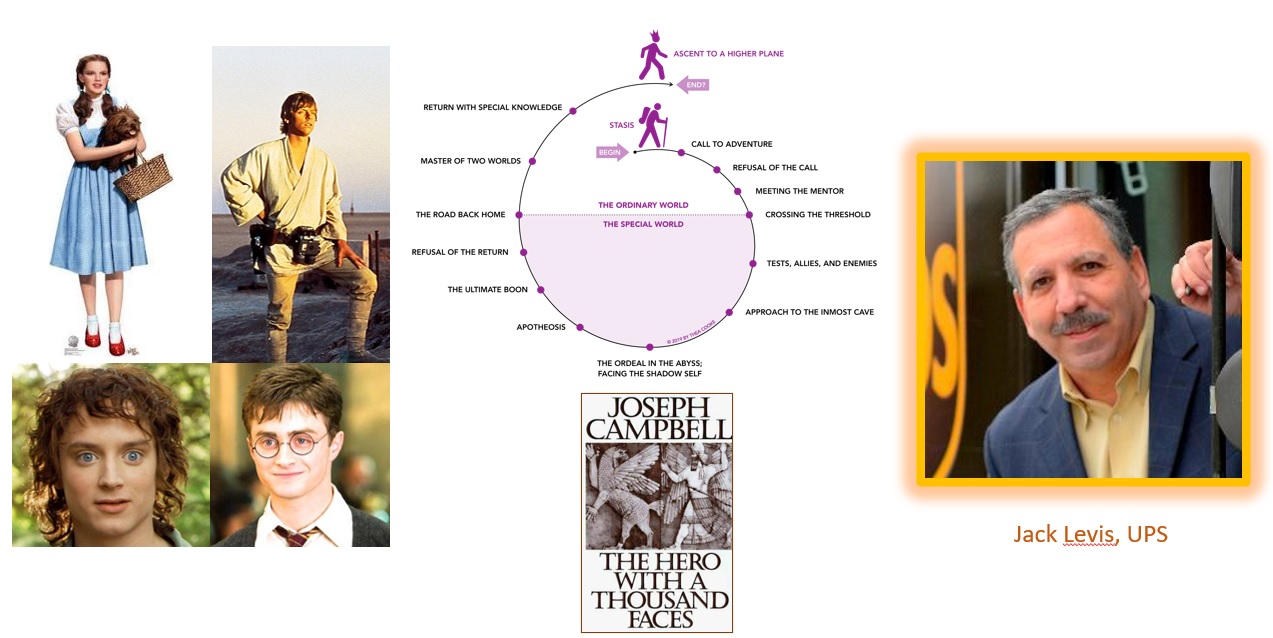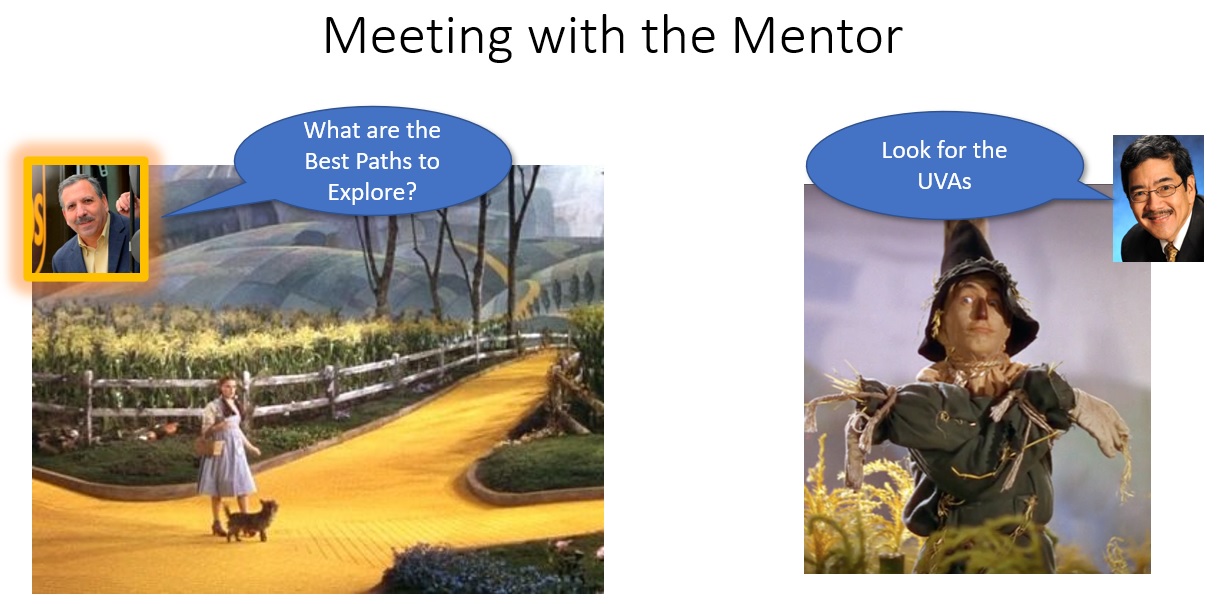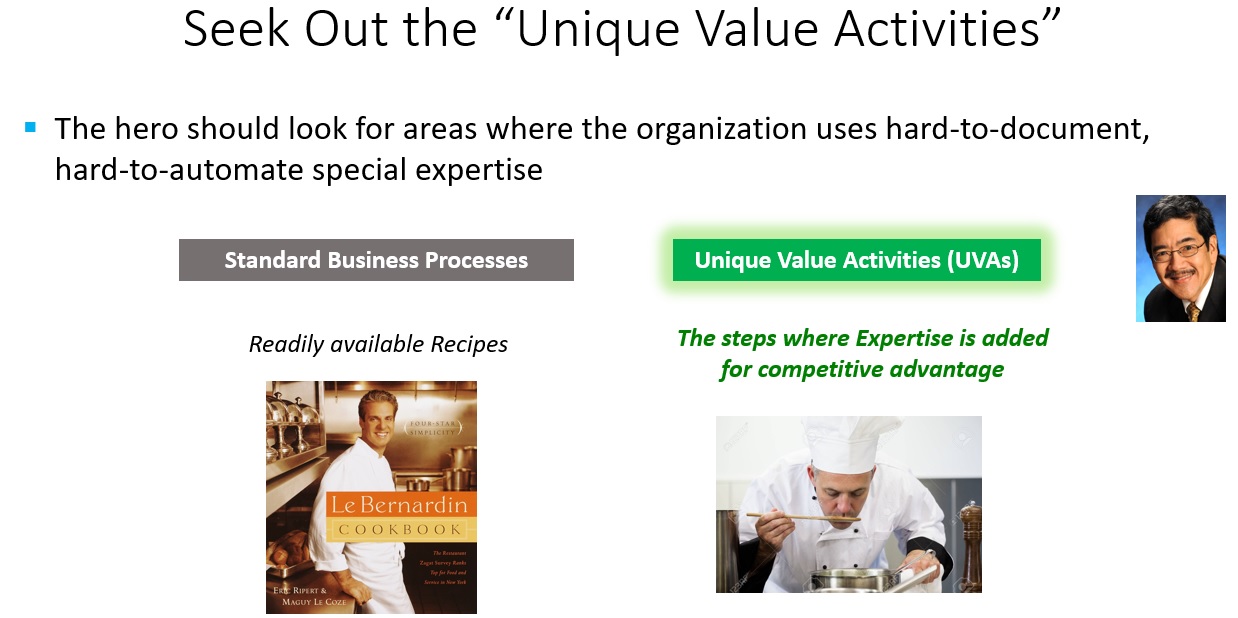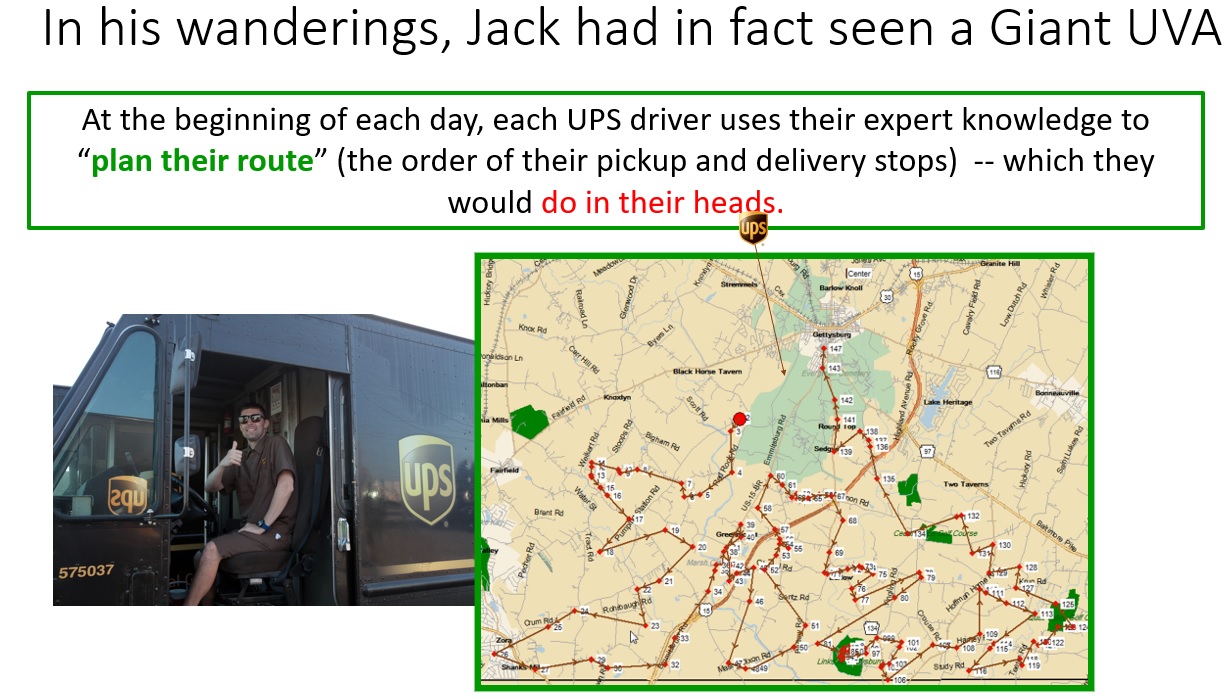
What do Dorothy from "The Wizard of Oz," Luke Skywalker, Frodo Baggins, and Harry Potter have in common? They all participate in “the hero’s journey,” a term coined by Joseph Campbell, whose great book, The Hero with a Thousand Faces, famously asserts that the hero’s journey has been told thousands of times through history, and it always follows the same epic steps. I’d like to feature a present‑day, real‑life hero and his journey: Mr. Jack Levis from UPS.
Joseph Campbell writes that all heroes’ journeys start with “the call to adventure.” For Jack, the call to adventure was to turn around the UPS Operations Research Group, a famous group at UPS that had an early history of groundbreaking success. When our story opens, UPS has a new CEO, who looks at the group and says, “I see a lot of studies, pilot projects, PowerPoints, and white papers—but I hear it’s been years since they delivered anything into production that moves the needle.”

He brings in Jack and says, “I know you don't come from a background in operations research, and that’s probably for the better. I want you to go in there and fix it, or we’re going to shut it down.” That’s Jack’s charge, his call to adventure. As in all good stories, Jack leaves home. He travels around to universities and consulting firms to find ideas and best practices, and that’s how I first met Jack.
Do you remember in The Wizard of Oz, when Dorothy is told to follow the Yellow Brick Road to Oz, and she comes to a place where it forks off many directions, and she doesn't know where to go? She meets “the mentor” of the hero's journey, the Scarecrow, a role which I played for Jack with probably about the same amount of brains. Jack says, “Look, my dilemma is that we find our group spread across all these different change management initiatives.” He wants to know, “In your consulting experience, how do you find the right initiatives to get involved with?”

I tell him that one of our favorite techniques is to get down into the bowels of the organization, away from the PowerPoint, to watch how people are really doing their jobs, and seek out the unique value activities, or UVAs.
What’s a UVA? In any organization, there are standard business processes. Consider the recipes for a restaurant. Le Bernardin, widely regarded as the greatest seafood restaurant in New York, even publishes its best recipes. Following these recipes doesn't make your restaurant Le Bernardin, because there are small, hard‑to‑document, hard‑to‑automate, unique value activities that make all the difference. How can you spy a UVA in any corporation or organization? Two tips.

First, check the software. Standard business processes often have multiple off‑the‑shelf turnkey solutions available. UVAs, on the other hand, almost always require a combination of custom IT systems, usually developed in‑house, and specialists doing calculations in their heads, using their own expertise.
Second, check the key performance indicators. Standard business processes have well‑accepted KPIs, that you can get data on competitors to benchmark against. In contrast, UVAs usually have homegrown KPIs, simply based on history—the average, “the best we’ve ever done”—but importantly, your organization has no concept or way of measuring what the theoretical best would be.

Jack said that he had, in fact, seen a “giant UVA.” Remember, we said that one place to look is where experts are doing high‑value work in their heads? At the beginning of each day, UPS drivers across the country were using their expert knowledge to plan their route. In other words, they were planning the order of their pickup and delivery stops, which they would do in their heads. Jack says, “Route planning has all the characteristics that you’re talking about, and automating could potentially unlock a lot of value.”
We will follow Jack further on his epic journey in the next blog post.
